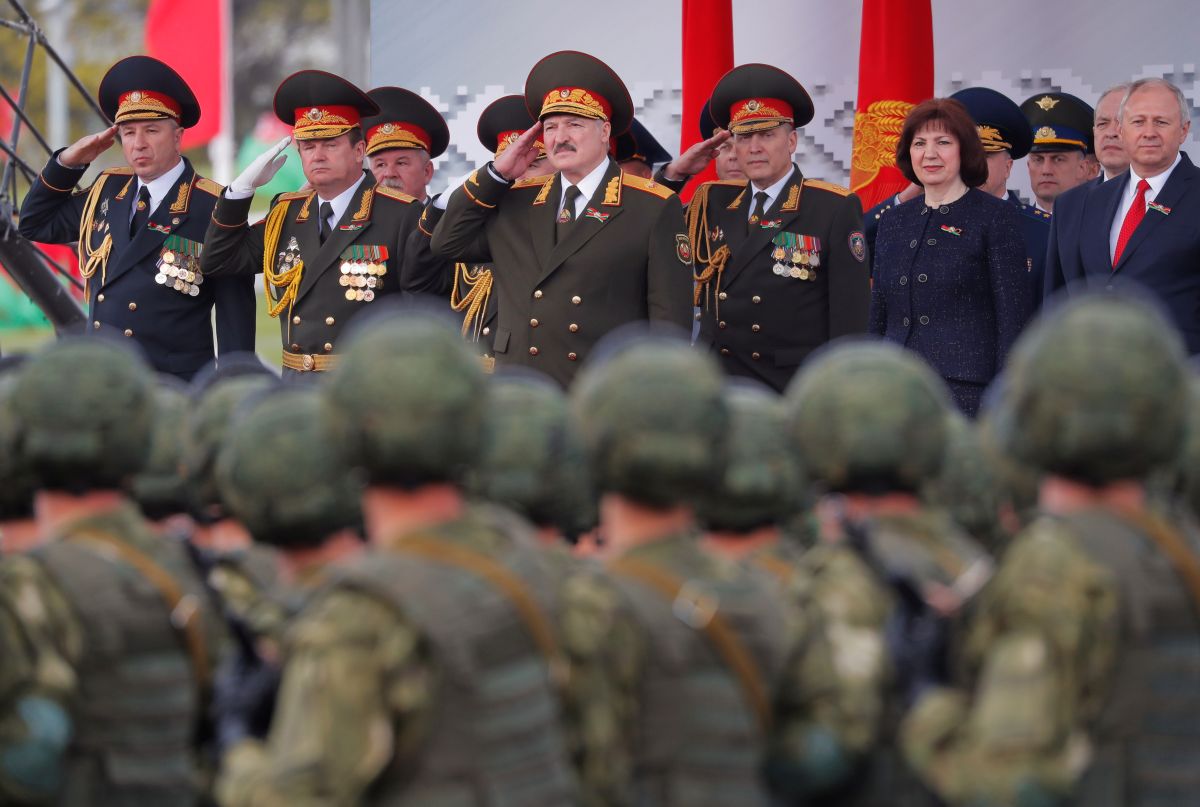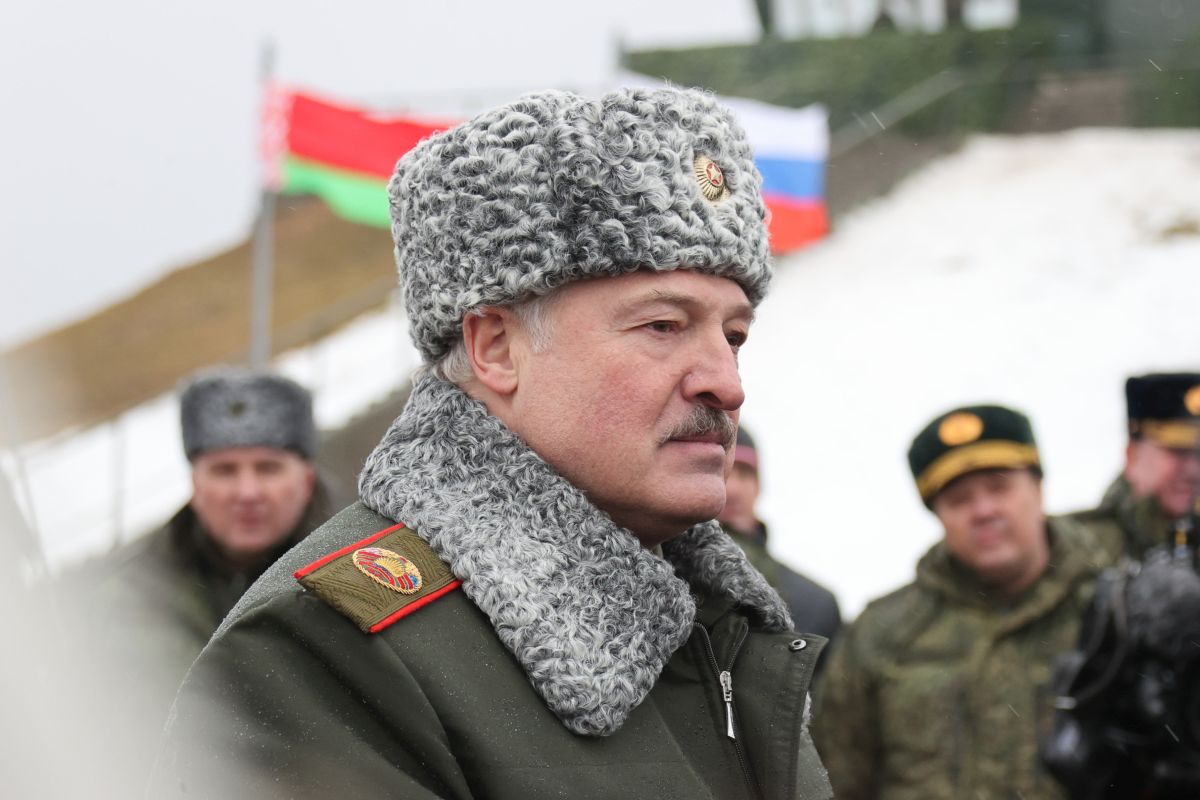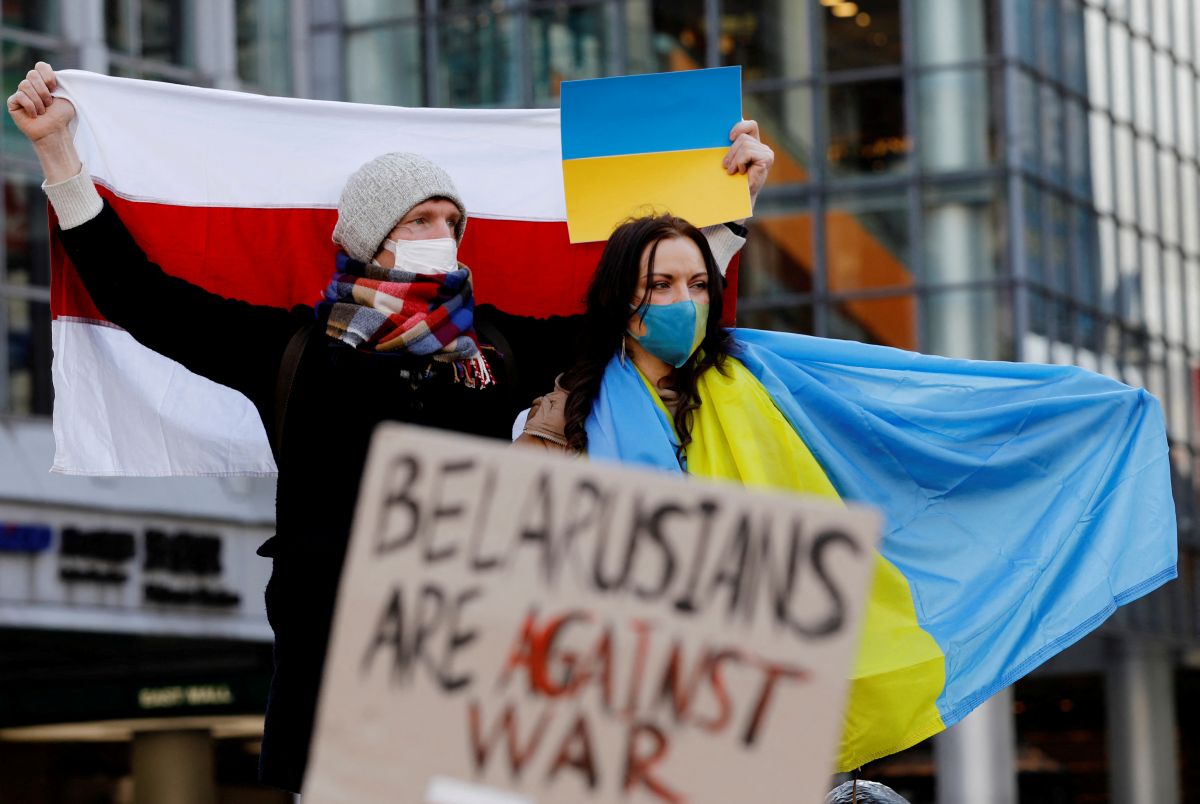Belarus Declares It Will Upgrade Its Armed Forces
On 26 May, Alexander Lukashenka announced the creation of a third operational command— South—of the Belarusian Armed Forces. He also announced plans to speed up rearming of the army, arguing that the threat posed by Ukraine and NATO countries is growing. However, given the country’s budgetary constraints, the proposed reform will not mean a significant increase in the potential of the Belarusian army in the near future. The change most likely stems from the needs of the Russian Armed Forces related to the war in Ukraine and other reasons. It also shows that the Belarusian authorities have become completely dependent on Russia in their security and defence policy.
 VASILY FEDOSENKO/ Reuters/ FORUM
VASILY FEDOSENKO/ Reuters/ FORUM
The Belarusian Armed Forces have about 45,500 soldiers, including officers. The best-trained component, with the greatest combat readiness, are the special operations forces created in 2007 and which have about 6,000 troops total (three brigades: 5th, 38th, and 103rd). This formation most often cooperates with Russian troops, especially airborne units (VDV). So far, the Armed Forces of Belarus have not participated in hostilities and their only experience outside the country was the peacekeeping mission in Lebanon and the CSTO stabilisation operation in Kazakhstan. Belarus also has about 11,000 high-mobility internal troops subordinated to the Ministry of the Interior.
The New Operational Command
The new command, like the previous two, will be a higher operational formation consisting of brigades and other tactical units and troops. In announcing it, Lukashenka changed the structure of the Armed Forces established in 2001. At that time, the West command was created on the basis of an army corps formed from the 28th Combined Arms Army existing in the USSR and the Northwest Command based on the Army Corps of the 7th Tank Army. This structure reflected the most important security challenges from the perspective of the Belarusian authorities, particularly related to the accession of Poland (1999) and the Baltic states (2004) to NATO. Until now, every command included two mechanised brigades, one artillery brigade, and smaller tactical units (mainly regiments and battalions) of other types of troops, such as engineers, communications, radiological, biological and chemical defence, and radio-electronic warfare. The establishment of a new structure should mean the creation of new tactical units (at least one brigade and support units) along with the necessary infrastructure, and increase the overall size of the army by at least 6-7,000 soldiers, or even up to 15,000 troops if the command must be fully functional. This will be a significant challenge for Belarus, which spends around 1.3% of GDP on defence (around $530 million in 2022).
Given this challenge, during the initial period of operation of the new command, the combat potential of both existing structures is expected to be weaker. The core will be the special operations forces, as well as logistics and engineering units responsible for the construction of the new infrastructure. It cannot be ruled out that Russia will support Belarus in creating the new structure or that Russian troops will be deployed there.
Rearmament Plan
The Belarusian army’s equipment was mostly produced when it was part of the USSR, such as T-72B tanks, BMP-2 infantry fighting vehicles (IFVs), BTR-70 and BTR-80 armoured personnel carriers (APCs), Msta-S, Giatsint, or Gvozdika mobile howitzers, and MiG-29 and Su-25 planes. For modern weapons, Belarus has the BTR-82A IFV, Polonez rocket artillery system, and Su-30SM fighters.
Since the rigged presidential election in 2020 and amid accusations against NATO of conducting hostile activities towards Belarus, Lukashenka has said that Belarus will strengthen the combat capabilities of its Armed Forces and obtain from Russia various equipment, including S-400 air defence systems and Tor-M2 and Iskander-M ballistic missile systems. At a meeting with Vladimir Putin in St. Petersburg on 25 June, the leaders jointly announced modernisation of Belarus’ Su-25 aircraft to make them capable of carrying tactical nuclear weapons. The deployment to Belarus of these weapons would not constitute a breach by Russia of the Treaty on the Non-Proliferation of Nuclear Weapons, and there are no technical or legal obstacles on the Belarusian side (the point in the Belarusian constitution that the country aimed at the status of a neutral and non-nuclear state was deleted), so such systems can be dislocated there.
The new weapons are to be deployed mainly in western Belarus, near the border with NATO countries. The cost of the planned purchases is estimated to be at least the equivalent of $1 billion, and thus significantly exceeds the annual defence budget of Belarus. It cannot be ruled out that the Russians will decide to reduce the prices of equipment sold to Belarus to provide some of them basically for free or to permanently deploy their own weapons to Belarusian territory, especially the S-400 and Iskander-M systems. Some of the purchases may be financed through income from the Belarusian defence industry, which works mainly for Russia. Moreover, Russia will probably decide to grant preferential loans for Belarus to buy some of the equipment. However, in any case for Belarus it will be a significant budgetary burden, especially since it is under sanctions and income restrictions on the sale of petroleum products or fertilisers, some of its main exports.
Work is also underway to modernise the equipment built by the Belarusian defence industry. The most important planned project is to increase the range of the Polonez system, which was developed jointly with China and entered service in 2016, from about 200 km to 300 km.
The Importance of the Reform
The southern command will most likely not have a direct border with NATO countries, and the task of the troops stationed there will be to increase the military pressure on Ukraine. Its appointment is related to the change in Belarus’ perception of regional threats and to Russian pressure in this regard (visible, for example, in the scenario of this year’s Belarusian-Russian Allied Resolve exercises and the content of the Union State’s military doctrine published in February this year). Most likely, it was also forced by the current needs of Russia, which is involved in military operations in Ukraine. However, this does not mean that the probability of the direct participation of the Belarusian Armed Forces in this war will increase. Given the troops’ relatively low combat potential and public opposition, Lukashenka would only take this step as a last resort and under considerable pressure from Russia.
The failures in February and March to take the Kyiv region, when components of Russia’s 35th and 36th Combined Arms Armies stalled in part because of a lack of sufficient rear infrastructure, showed the need to expand such infrastructure in southern Belarus. It still has not been developed there, as the Belarusian authorities had not perceived Ukraine as a threat until now, and a significant part of the border areas has long been restricted from use because of contamination after the Chernobyl incident. The infrastructure of the new command will probably be used mainly by the Russians, for whom it is necessary to increase the number of military facilities in Belarus to fight the war in Ukraine and counter NATO. With high probability, the establishment of the new structure will increase the number of Belarusian and Belarusian-Russian exercises near the Ukrainian border.
Conclusions
Unlike Russia, the Belarusian authorities have so far avoided the militarisation of the state. Maintaining the functioning of the secret services (mainly the KGB), which Lukashenka assessed as definitely more efficient and important than the army, was vital because he perceived independent actors as the greater threat to the regime than scenarios of a conflict with NATO. The proposed reform and rearmament plans, despite budget problems, indicate that the Belarusian authorities have adjusted their approach, likely under pressure, to threats perceived by Russia. This is another factor that demonstrates Belarus’ lack of sovereignty in security and defence policy and its complete subordination to Russia’s needs after consenting to the use of Belarusian territory for the invasion of Ukraine in February. The possible deployment of Russian units and equipment (mainly artillery, missile, and air defence systems) near the border with NATO’s Eastern Flank and the potential acquisition of modern weapons by Belarus means the Alliance and its members must adjust their defence plans.
The new Belarusian operational command will pose a threat and a challenge to Ukraine’s defence planning. In the short term, the latter must allocate more forces to defend its northern border with Belarus (it has already mined roads and railroads leading in this direction) and increase the protection—mainly the airspace—of Kyiv, which will draw away forces operating and fighting in the east and south of the country. In the longer term, this will mean Ukraine must increase its permanent defences near the border with Belarus, including keeping troops in a state of constant readiness and deploying additional equipment in the area.





